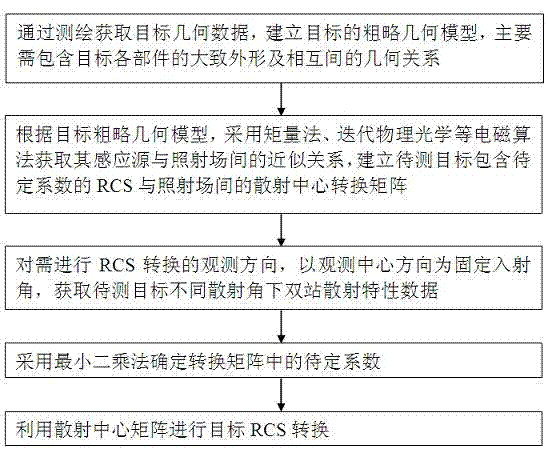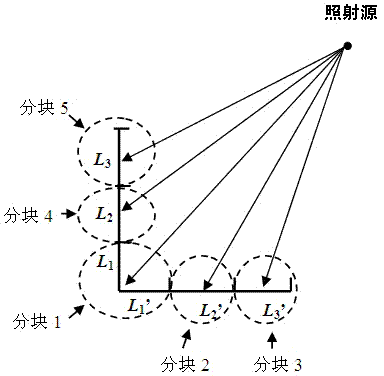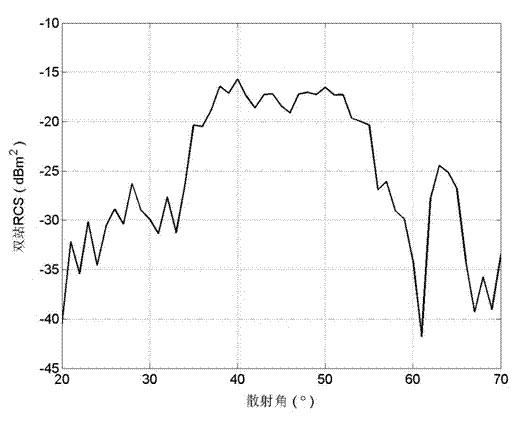RCS conversion method based on scattering center matrix
A technology of scattering centers and conversion methods, applied in radio wave measurement systems, instruments, etc., can solve problems such as parameter changes that cannot be applied to coupled scattering points
- Summary
- Abstract
- Description
- Claims
- Application Information
AI Technical Summary
Problems solved by technology
Method used
Image
Examples
Embodiment Construction
[0055] In order to describe the technical content, structural features, achieved goals and effects of the present invention in detail, the following will be described in detail in conjunction with the embodiments and accompanying drawings.
[0056] Such as figure 1 As shown, the RCS conversion method based on the scattering center matrix of the present invention comprises the following steps:
[0057] (A), rough target shape acquisition and block preprocessing
[0058] Through surveying and mapping, obtain the general shape of each part of the target and the geometric positional relationship between them, ignoring the details such as the surface roughness and deformation of the target, and establish a rough target model; then according to the positional relationship between the various parts of the target and the observation distance, according to the far-field approximation conditions Carry out block division, that is, the size of each block is taken as
[0059] ...
PUM
 Login to View More
Login to View More Abstract
Description
Claims
Application Information
 Login to View More
Login to View More - R&D
- Intellectual Property
- Life Sciences
- Materials
- Tech Scout
- Unparalleled Data Quality
- Higher Quality Content
- 60% Fewer Hallucinations
Browse by: Latest US Patents, China's latest patents, Technical Efficacy Thesaurus, Application Domain, Technology Topic, Popular Technical Reports.
© 2025 PatSnap. All rights reserved.Legal|Privacy policy|Modern Slavery Act Transparency Statement|Sitemap|About US| Contact US: help@patsnap.com



